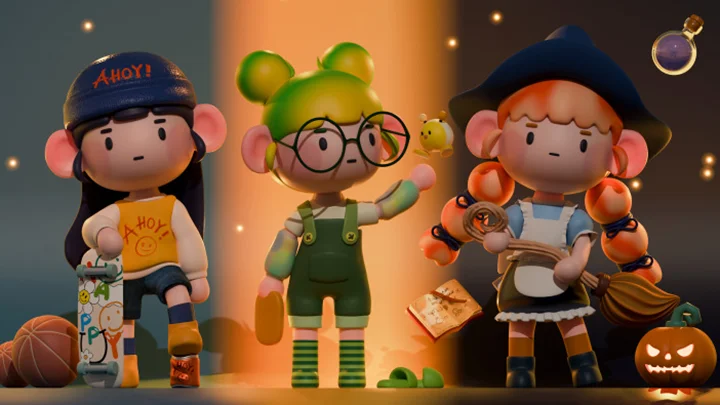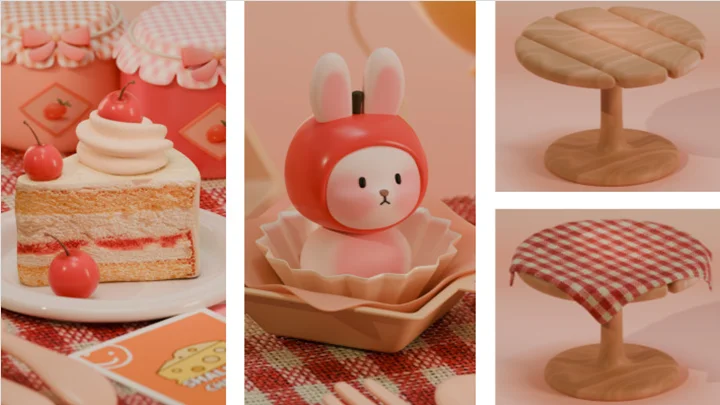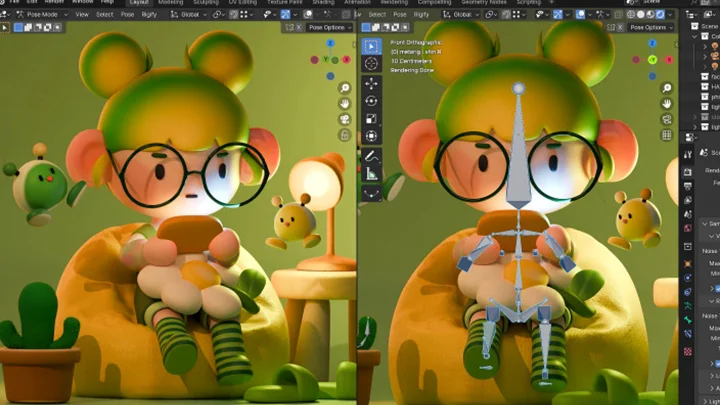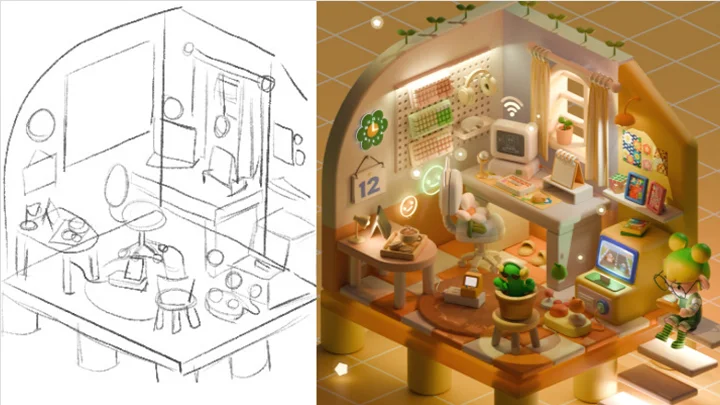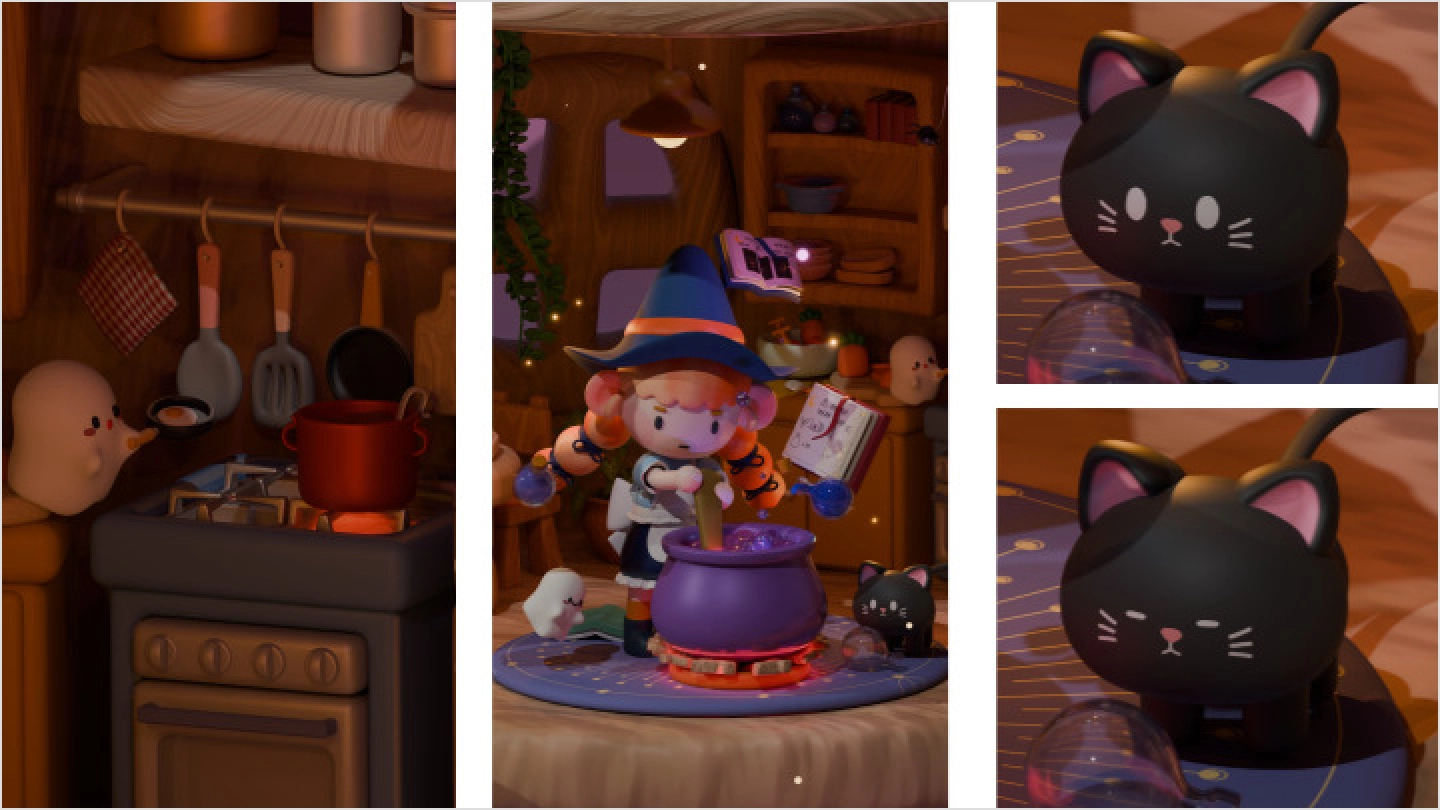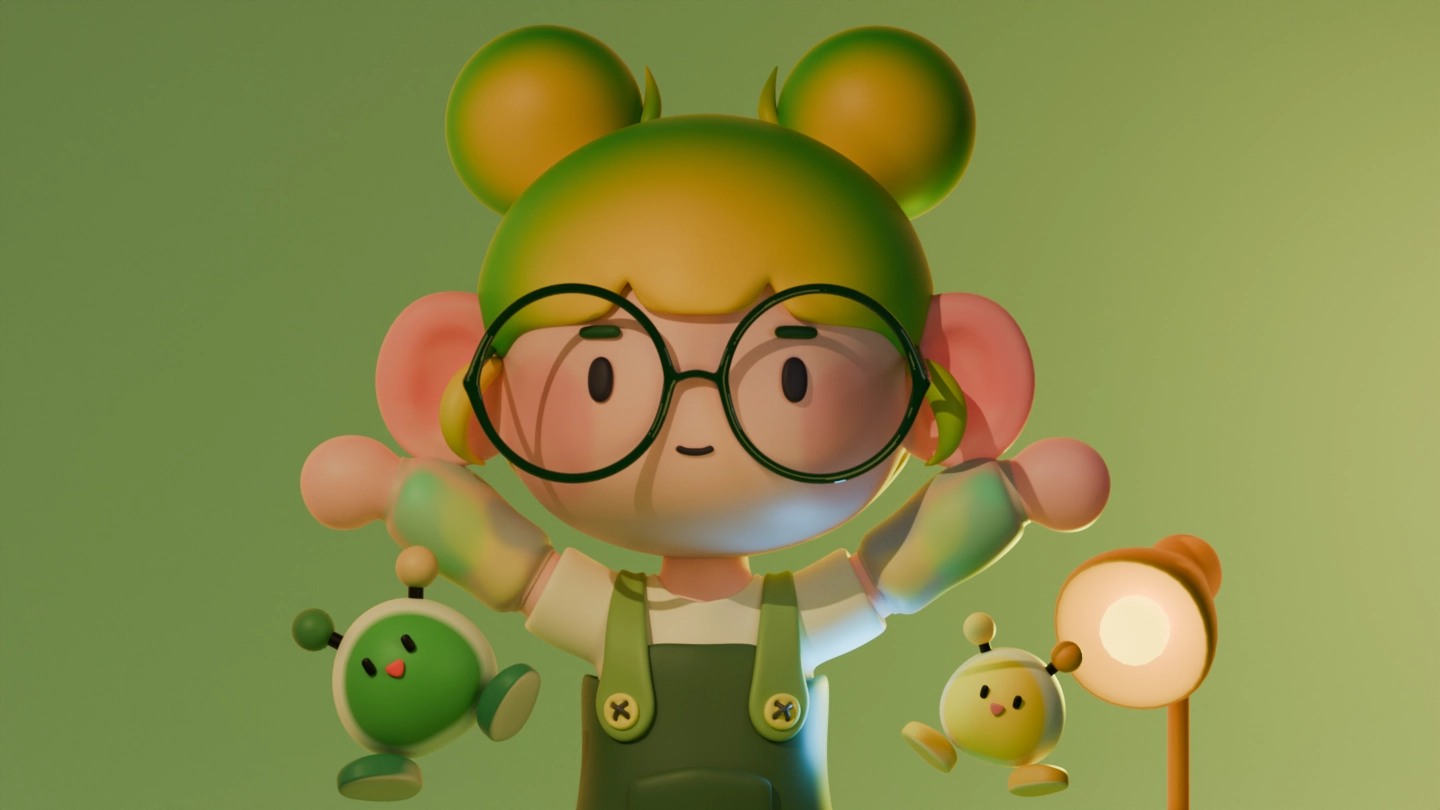[preorder] 3dartist,ddangking_땅킹KR Details
Mirada en profundidad
- SECTION 01
Part 1. Intro
01. Intro - Course objectives and curriculum overview - How to use the course - Introduction to Blender - Concept-based idea development methods
02. Blender Basics - Downloading and installing Blender - Interface explanation - Exploring preferences and settings - How to manipulate the 3D view - Setting up a convenient workspace - Creating basic shapes (Mesh) - Moving, rotating, and resizing objects - Additional features for transformations
- SECTION 02
Part 2. Happy Birthday
03. Object Modeling- Storyboard planning and sketching - Bevel: Creating a table - Cloth simulation: Adding a tablecloth - Modeling a plate and a slice of cake - Creating curves to depict whipped cream on the cake - Modeling a spoon, fork, and salad bowl - Round Cube: Creating a rabbit head - Screw: Modeling a jam jar and beverage - Poster, balloon, cherry lights - Setting up HDRI environment
04. Materials and Rendering- Exploring material color adjustments - Using nodes - Musgrave, noise texture: Creating wood textures - UV Unwrap -> Texture painting: Painting the rabbit's face - Lighting and rendering settings for warm color tones - Depth of field: Rendering high-quality artwork - Using image textures to create a detailed cake
- SECTION 03
Part 3. Creating My Own Profile Character
05. Basic Character Modeling- Introduction to the character creation process - Highlighting unique features to create your own profile character - Blocking out the character to proper proportions - Extra object - round cube: Modeling the face - Extra object - round cube: Creating the character's torso
06. Girl Riding a Board Production - Modeling long hair - UV unwrapping the face and texture painting - Modeling clothes using basic shapes - Combining two materials to create a natural clothing texture - Mesh deform modifier for natural rigging - Posing the character, basketball, skateboard - Creating a crushed can - Installing background objects using open-source markets - Setting up lighting for natural rendering - Adjusting color tones in Blender and rendering
07. Creating the Girl Playing Games- Modeling a bun hairstyle - Creating a bean bag - Posing the character sitttng down - Modeling a flower cushion, game console, and table - Creating a cactus, slippers, and lamp - Creating a flying character - Setting up lighting to create a dark atmosphere with bright lighting - Adjusting color tones in Blender and rendering
08. Creating the Little Witch- Modeling pigtails - Modeling clothes and using curves to decorate the outfit - Applying mesh deform to a character wearing a skirt - Natural rigging techniques - Creating a cooking pot, firewood, and ladle - Modeling a book and cylinder - Creating a glowing pumpkin - Using metaballs to create sticky liquid effects - Using lighting to create glowing fireflies in the air - Setting up lighting and background to evoke a mystical atmosphere
- SECTION 04
Part 4. Isometric Modeling: Jelly's Secret Workshop
09. Isometric Basics- Understanding isometric design - Isometric concept and material composition - Isometric sketching - How to imagine fun concepts in everyday life - Collecting references - Working on rough sketches based on ideas - Space blocking techniques
10. Isometric Modeling- Array: Modeling patterned floor and overall composition - Creating wall-mounted shelves and windows - Cube: Modeling a desk - Creating a wheeled computer chair and computer - Desk decor: Keyboard, mouse, mouse pad, microphone, desk calendar, and sprouts - Vertex group, cloth simulation: Curtains - Perforated board, headset, and vine plants - Bevel modifier: Semi-elliptical desk - Modifiers: iPad, snacks, stand, game console, joystick, beans, and teddy bear character - Hair particle: Rug, cactus, and mini chair - Text object: Flower-shaped clock - Boolean, array, bevel: Calendar, socket, poster, frame, and cube
11. Isometric Texturing - Setting up HDRI environment and lighting for a dark game room feel - Adding display materials - Working on color adjustments for objects - Applying images to objects
12. Animating and Rendering- Deciding on the animation sequence - Keyframe: Animating keyboard movements - Curve: Bouncing animation of beans and teddy bear - Rendering animations - Adding vibrant color tones for realism
- SECTION 05
Part 5. Isometric Animation: The Little Witch's Mysterious Dinner
13. Isometric Modeling - 1- Sketching and space blocking - Creating the frame of a house with an oval shape, modeling the overall composition - Modifiers: Refrigerator, stove, wall shelves, cooking tools - Curved objects: Pot, frying pan, fried eggs, drawer - Grease pencil: Creating spider webs, broom - Importing a character file cooking in a pot - Setting up HDRI environment and basic lighting installation
14. Isometric Modeling - 2 - Creating a cat, table, and chair - Particle hair, inflate modifier: Dinner scene - Curve: Modeling lights
15. Isometric Modeling - 3- Curve: Modeling a hanging basket, rope, and filling the basket - Curve, hair particle: Vines, pumpkin, mushrooms - Ladder, signpost, rocks, cherry lights - Nodes: Fireflies - Modifier: Curved bookshelf - Screw modifier: Paper tube, lighting cylinder
16. Texturing- Musgrave, noise texture: Wood texture, spotted patterns - Cold texture: Pumpkin, plate textures - Explanation of light color adjustments, direction, and types - Setting up lighting to evoke a dark and mystical atmosphere
17. Animating and Rendering - Planning the overall animation story - Physics simulation: Gas stove flame effect while cooking - Material animation: Flickering lights - Image animation: Cat blinking - Metaball animation: Creating sticky liquid effects - Shape key: Pouring beaker - Character rigging animation: Cooking, cat tilting and wagging tail, moving ghost, dangling spider - Marking camera animation - Adding camera keyframes: Zoom in, zoom out
- SECTION 06
Part 6. Wrapping Up the Course
18. Outro - Wrapping up
